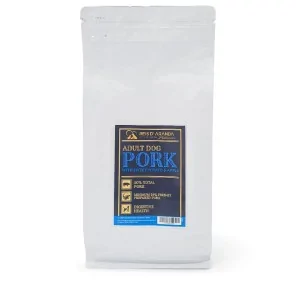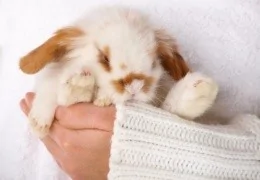The Tornjak originated from genetically homogeneous, almost extinct, indigenous shepherd dogs. These dogs have...
THE URUGUAYAN MAROON
INTRODUCTION
With its roots rooted in the vast Pampas, the Uruguayan Maroon breed is extremely strong. It is a dog that is a survivor, with a long and hard story to tell.
THE HISTORY OF THE CIMARRÓN URUGUAYO
Today the character attributes of this breed, known in Uruguay as the cimarrón, are making it increasingly popular in Uruguay and the region, being used as a companion, guard and hunting dog, especially for wild boar.
Due to the preponderant cattle raising activity in these lands and the consequent abundance of food without great competition with other natural predators, the cimarron reproduced in great numbers, becoming - according to historical documents - a real plague and scourge for the inhabitants of the countryside and cattle raising.
There are detailed chronicles of attacks by packs of these dogs on caravans and people, which led the authorities of the time (at the end of the 18th century) to order and encourage large-scale slaughters, with tens of thousands of dogs being killed.
Each dead animal was paid for by the authorities of the time, and proof of death was required in the form of the animal's jaw or pair of ears. From this practice would derive the characteristic ‘puma ear’ cut off of many newborn pups.
In spite of these killings, ‘...a good number of mothers with their offspring won the mountains of Olimar and especially in the mountains of Otazo and in the Cerros Largos’, in what is currently known as the Departments of Cerro Largo and Treinta y Tres, where numerous landowners and landowners of that place, took advantage of the virtues of this breed for the work with cattle and defence of their property, beginning to breed them, preserving them from crossbreeding.
The modern traces of the breed began to become more public at the beginning of the 1980's, when numerous breeders in Montevideo, attracted by the remarkable characteristics of some specimens, began to develop their breeding and standardisation.
It was in 1989 when this work began to bear fruit, when the Uruguayan Cimarron was officially recognised by the Rural Association of Uruguay (A.R.U.) and the Uruguayan Kennel Club (K.C.U.), twenty years after the first exhibition of a specimen of this breed at the K.C.U..
The Asociación de Criadores de Cimarrones Uruguayos was created and together with the K.C.U. the official register of the breed was drawn up, selecting the basic dogs of the breed and registering their offspring, being for the first time tattooed with this registration number.
Since its standardisation, this breed has awakened a growing interest both within Uruguay and abroad, with specimens of this dog in various countries of America, from the United States to Argentina, the latter country having several breeders of the Uruguayan Cimarron.
Another of the steps achieved for the genetic improvement of the breed is the subscription of an agreement between the UDELAR, through its Veterinary Faculty, with the Sociedad de Criadores de Cimarrones, for the study of the zootechnical situation and consanguinity of the specimens registered in their registries.
This long process of standardisation was crowned on 21 February 2006, when the International Bureau of the Federation Cynologique Internationale (FCI) granted the Uruguayan Maroon international recognition.
The primitive Maroon dog, due to its roots in Uruguayan territory, has been a symbol of the struggle for independence since the very beginning of the national identity of this people. This is faithfully reflected in the letter sent by General José Gervasio Artigas, in reply to General Carlos Federico Lecor (Count of La Laguna and Governor of the Cisplatine Province (now Uruguay)), in which he expressed that, if he ran out of soldiers to fight, he would do it with maroon dogs.
It is because of this tradition that this breed is currently the symbol and mascot of the National Army of Uruguay, having a preferential place in the annual military parades of the 18th of July. On this occasion, a soldier of the Battalion of Blandengues (the company once led by Artigas himself) leads the parade, riding and leading by the bridle a riderless Moorish steed, with a Maroon dog at his side.
THE STANDARD OF THE URUGUAYAN CIMARRÓN
GENERAL APPEARANCE: The Cimarrón Uruguayo is a dogo type dog, of medium size, strong, compact, well boned, muscular and agile.
IMPORTANT PROPORTIONS:
- Height at withers : length = 10 : 11.
- Height at withers equal to height at croup.
- Muzzle slightly shorter than the skull.
- Height from ground to elbow and from elbow to withers should be equal.
HEAD
CRANIAL REGION:
SKULL: Broader than long: Occiput slightly accentuated.
STOP: Moderate.
FACIAL REGION:
TRUFA: Broad, black or in accordance with coat colour.
HOCIO: Powerful. Medium width, only slightly shorter than the skull.
LIPS: The upper lip covers the lower lip without being pendulous.
JAWS / TEETH: Jaws strong, powerful. Teeth strong, aligned and preferably complete, lack of PM1 acceptable. Scissor bite (the outer face of the incisors fits vertically into the inner face of the upper incisors).
CHEEKS: Well developed, not too prominent.
EYES: Medium size, almond shaped. Inquisitive look. Any shade of brown and in accordance with coat colour, the darker the better. Eyelids close fitting and fully pigmented.
EARS: Of medium size, set on neither too high nor too low, triangular, falling to the sides, set wide apart from the cheeks or rose-shaped. Traditionally cropped in the country of origin.
NECK: Strong, muscular, not too long.
BODY :
UPPER LINE: Level or with a slight depression behind the withers.
CROSS: Well defined.
LOIN: Short, strong and slightly convex.
Croup: Of good length and broad. Sloping at 30° to the horizontal.
CHEST: Deep, reaching at least to the elbow. Broad and well developed. Ribs well sprung, without being curved. Well defined forechest.
TAIL: Thick, medium set. Its length should reach to the crook of the neck. At rest the carriage is low, in movement it is carried horizontally or slightly upwards.
LIMBS :
FOREQUARTERS: Seen from the front, straight and parallel.
SCAPULAS: Well laid back.
ARM: Of equal length to the shoulder blade.
ELBOW: Neither turned in nor turned out.
FOREARM: Straight, with strong bone.
Pasterns: Seen in profile, slightly sloping.
HANDS: Oval, with closed toes, strong pads.
HINDQUARTERS: Muscular and powerful. Seen from behind, parallel.
THIGH: Well developed.
KNEES: Well angulated.
HINDQUARTERS: Firm, of medium length.
FEET: Cat feet. Strong foot pads.
GAIT / MOVEMENT: Effortless, with good ground covering, good reach of forelegs and good drive of hindquarters. The limbs move parallel, approaching a midline as speed increases.
SKIN: Thick and elastic.
COAT
HAIR: Short, smooth, close to the body and with undercoat.
COLOUR: Bay and brindle in all shades, including bluish bay and bluish brindle, with or without mask, and may be fawn. White patches are permitted on: lower jaw, throat, forechest, belly and lower part of the limbs not exceeding the wrist or halfway up the metatarsal.
SIZE AND WEIGHT:
HEIGHT AT WITHERS
- MALES: 58 to 61 cm (tolerance 2 cm).
- FEMALES: 55 to 58 cm (tolerance 2 cm).
WEIGHT:
- MALES: 38 to 45 kg.
- FEMALES: 33 to 40 kg.
FAULTS: Any departure from the foregoing points should be considered a fault and the seriousness with which the fault should be regarded should be in exact proportion to its degree and its effect upon the health and welfare of the dog.
- Excessively pendulous labial commissure.
- Excessive dewlap.
- Excessively prominent cheeks.
SERIOUS FAULTS:
- White patches outside the specified regions.
- Obvious deviation from important proportions.
- Absence of sexual dimorphism.
- Size not reaching or exceeding the stipulated height (including tolerance).
- Descending topline.
DISQUALIFYING FAULTS:
- Aggressiveness or extreme shyness.
- Any dog showing clear signs of physical or behavioural abnormalities.
- Obvious atypicality.
- Overshot.
- Enognastism.
- Depigmented nose.
- Long coat.
- Dogs with coat having genetic brown (chocolate) pigmentation, either in berry or brindle variety, with brown nose and mucous membranes and light eyes.
- Any colour other than those described.
N.B.:
Male dogs should have two apparently normal testicles fully descended into the scrotum.
Only functionally and clinically healthy dogs of typical breed conformation should be used for breeding.
THE HEALTH OF THE URUGUAYAN MAROON
In general, given the origins of the breed, which was originally completely wild, it is a dog of enviable health. However, it is not immune to disease. Some of these include disorders such as hypothyroidism, which affects the functioning of the thyroid gland, resulting in deficient production of thyroid hormone, essential for good metabolism. Symptoms of hypothyroidism in dogs include tiredness, unexplained weight gain, infections and thinning of the skin.
Regular veterinary check-ups are essential to know if your bighorn is suffering from this and other conditions, as most are detected with basic tests such as blood tests or routine check-ups.
Other notable conditions include obesity, elbow or hip dysplasia and gastric torsion.
THE PERSONALITY OF THE URUGUAYAN CIMARRON
The Uruguayan Maroon is a dog of balanced character, very sociable if he has been properly accustomed to contact with others, but above all and above all he stands out for his great security and courage. It is a tenacious dog that never gives up, it does not stop until it achieves its objectives, which sometimes makes it difficult to deal with. Undoubtedly, it has a very marked personality.
It is not a breed suitable for those who are not used to owning a dog, as they need patience, constancy, companionship and a lot of previous knowledge of the breed and how to handle it.
The Uruguayan Maroon breed is best adapted to large, open spaces, although there are many specimens that live in flats without problems because they are correctly stimulated. As for its relationship with others, it may show aggressive responses to other dogs and animals, as it was traditionally trained as a guardian and hunting dog. It can coexist with children if properly trained, but supervision is recommended.
CONCLUSION
In general, especially in its country of origin, finding a Uruguayan Maroon for adoption is relatively easy, but training it is not, as we have already mentioned. For this reason, one must be very careful and in case of lack of training knowledge, be prepared to seek professional help.
Leave a comment
Log in to post comments
















